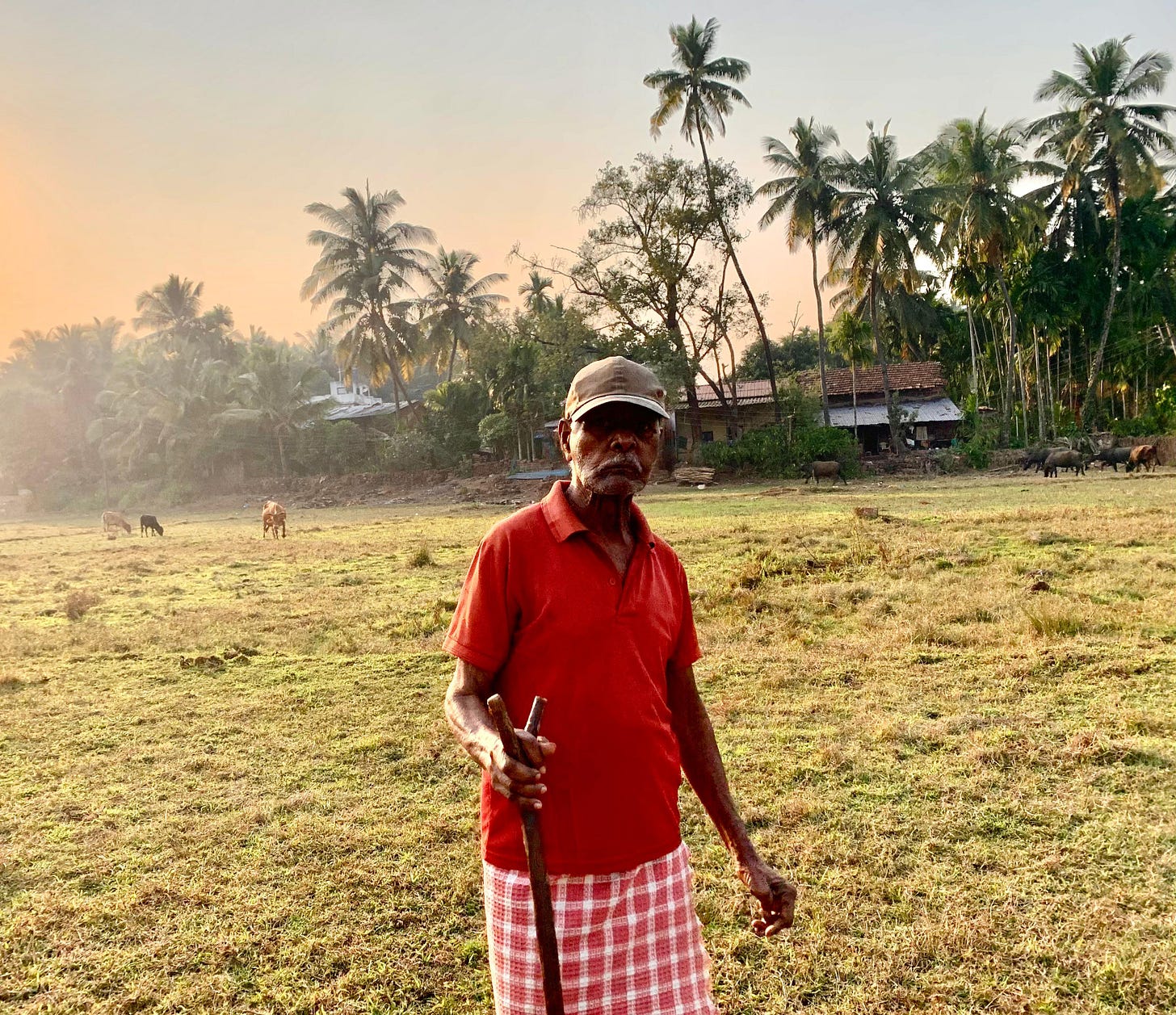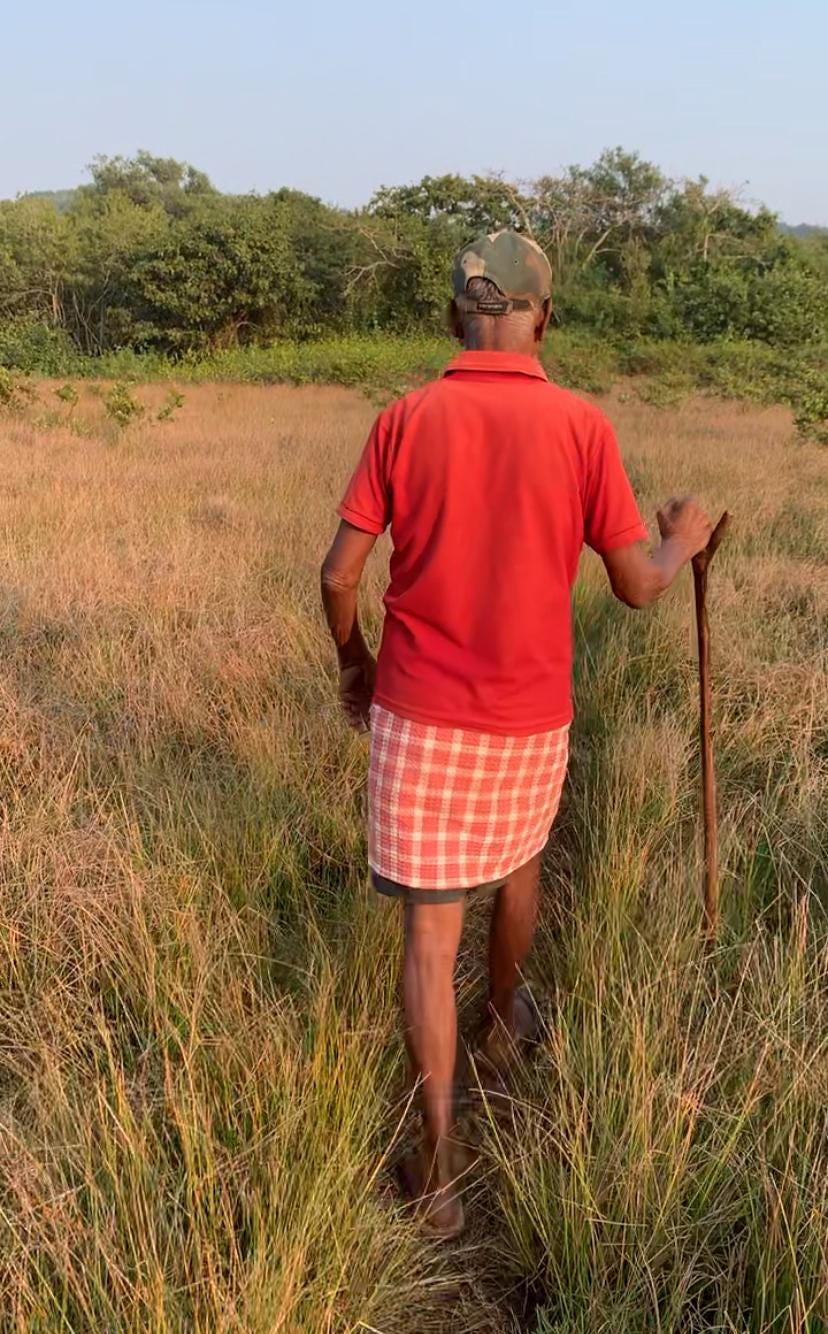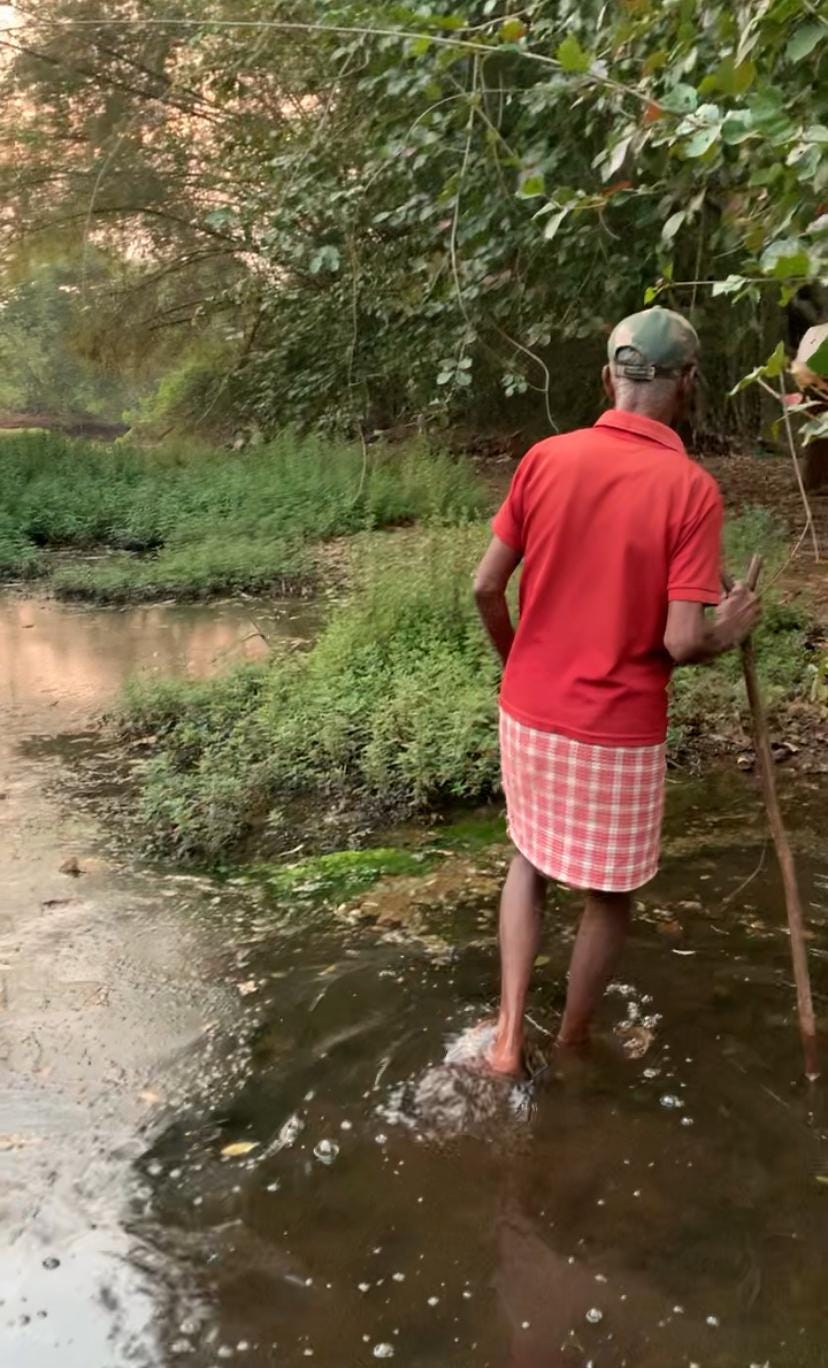Day 40-43 : The ancestral streams of knowledge
..and the urgent need to document it
This is my final day of resting in the village. After a week of working on all the background things that I have started off in my village, I am ready to head off towards Goa tomorrow. Like everyday, I left off on m daily walk across the village. Narvan looks and feels tiny if anyone would pass through it. A tiny square that houses a few corner stores, a medical, a grocery and a barber. But if you walk into the village and go around with people who have been old timers of this village, you are welcomed to the decades worth of work, done by the hands of countless people who called this village their home. These villagers produced rice, kulith and other millets in tons, but now these farms are overgrown by weeds. Their corner stones lay on the ground, lifeless, like an orphan who once had a parent who would put them up on the wall to fortify their farm from wandering buffaloes.
After crossing the bridge built by the kharland department (mangrove conservation dept.) I came across Jadhav ajoba. An elderly in the village, he is the only person left who knows all the ins and outs of the creek. For the past few decades, he has been walking around with his buffaloes and cows, roaming these very jungles and producing lots of food from these fields.
“Come walk with me,” I said.
By his stance, I knew he was not interested at the start but there is still some youth left in him. Every time he sees me, he gets excited. For him, I am someone who is interested in knowing about the past of this village, who wants to go through the tough path, who likes to explore the old ways. He is a fountain of ancestral knowledge and I am like that little kid who can’t get enough of the water flowing through this fountain.
“Yes. Let’s walk. I will show you something,” he said while chewing his paan and betelnut.
From the houses, which were empty, we crossed over to the farms. Once upon a time, these were were trodden paths. They would have seen many men and women walking to their farms. Their bullocks too roamed these very paths.
On any other day, if one walks through these farms, he would not see any path in front of him. But when you have people like Jadhav ajoba, even the invisible turns visible. A path appears, this one was probably walked by thousands of ancestors. Cowdung and buffalo dung lied on the ground, useless, because people stopped caring about it. Mangroves had grown around the creek which all housed many many species of birds and other lifeforms.
“Is this a form of mangrove?” I asked, somewhat bring forth my dumbness and lack of knowledge about the local flora and fauna.
“No. No. We could call it a form of mangrove, but it is called “chipi”. It’s wood is used in making houses. Didn’t you see one in front of my house?” he said touching the leaves of this chipi tree.
Who would have imagined that this tiny chipi tree which was about 3 feet tall, grows into a full fledged tree. In this local dictionary of knowledge, each tree and each tiny weed has a name. The grass in front of me, which I would have otherwise called useless, was the best fodder for bullocks and buffaloes.
If you would like to support me, please consider buying me a coffee, every nudge on paypal gives me more strength to write and work further.
“I have trained by bullocks feeding this grass. The animals eat this at the very end because it tastes bitter, but they too know that eating this gives the best milk and provides them with the needed strength to pull a bullock cart.” with a foot on one stone, a stick to balance him and another foot on the ground, he leaned over to the other side of the puddle.
“Come here. I want to show you something,” brushing aside a thorny climber called “vaghati”, he walked through a path that went towards the mangroves.
“Look at this. What do you see?” he asked me. His eyes were fixed on something but mine were searching for something known. I found nothing.
“What is it?” I finally asked with a dumbfounded look on my face.
“We are standing next to a canal. In the past, we would dig this up and make walls across the sides. Mixing in the grass with this mud would make it as good as cement walls.”
“..but what was it used for?” I cut him mid sentence.
“That’s it. I was waiting for you to ask me this. In the seasons after the monsoon, we would dam the water uphill and divert it through these canals. The water was then used by the farmers in the lower regions. We called it “vayangani sheti” (step water irrigation). But that wasn’t it, during the other seasons, the creek would fill up with salty water. This water would then cross over into the farms, thus we connected these canals to the creek, helping this creek push this excess water into these canals. The high tides would bring the sea water all the way to these canals and during the low tides the sweet water from the hill would irrigate the farm land. This see-sawing of water was developed with our “gaavthi” (village) brain. We brought in crops from Roha which gave better yield on these tidal farmlands, which had excess salt content. The buffaloes walked through these canals, never disturbing the farms.”
I stood there watching these canals, awestruck. These fallen stones were once a beautiful wall and this overgrowth of trees within the canal, once had free flowing water.
“I don’t like it when someone says that us villagers were stupid, uneducated. This was the technology developed within this land. We used our heads to work in unison with the nature. The viruses that spread politics and money within peoples heads, destroyed these beautiful farms. The pictures of fields of kulith and rice are etched in my mind forever. Even today I can see the same fields fluttering with the wind, only that it now flutters in the corners of my memory.”
I was watching a dam of knowledge flow without any barriers.
“These routes were also highways for our nature gods. They were rested on palanquins and marched through the forests on the hill.” he said while pointing his finger towards the hill on our right.
“These forests were pathways for our villagers to go to their farms on top. We knew that people would not agree to clean the pathways on our own, so we marched our Gods through those pathways. Thus, everyone joined in on the occasion to clean up these pathways, once or twice a year.” he said and digressed, “Your great-grandfather was a reverred Police Patil of this village. Did you know that? He looked that these barriers were built on time. He kept an eye on the canals. His work ensured that the village had enough infrastructure to aid farming. I see his image in you. Some other village elders too helped him. All of them had morality infused in their bones. The next generations unfortunately gave in to village politics and things went south.”
I have only heard about my great-grandfather. I never knew that his work was still stored in some distant corner of someone’s memory. Maybe he did share some of his ideals with me. I had heard that he would bring home people who were not even given good treatment by the society back then. He would sit them in our house and share his bread with them. Maybe that’s where this open mindedness comes from. My family was spared from this caste distinction due to this man’s willingness to see people as people. Who knows?
Jadhav ajoba took me a full circle through the fields, sharing with me paths that I never knew existed. He walked me through the river which I thought would be knee deep by now. “It dries down in this season,” he reminded me. Each pathway that was now blocked, opens up as the river starts to dry out. This was an apt ending to my week long rest in Narvan. This encyclopaedia of ancestral knowledge needs urgent documentation. Jadhav ajoba is probably the last of this generation who can remind us of the Konkan of past. The innovation, architecture savvy, forward thinking Konkan which only lasts in a few peoples memories.
I am looking for people who would like to help me out with this documentation. If you are into video/photo please connect with me. Let’s try to document this last remaining stream of knowledge— which if once lost, will never find another opening. You can also help me monetarily if you wish to help me with resources for this project. This is the UPI payment number - 8983726737
Thank you for the help provided so far and for being a part of this walk! I now have a team assisting me and if financial support can be provided to keep them going, then please do so. here’s the link
For Indians who want to support'/contribute, here is the UPI payment number GPay or PhonePe- 8983726737
The idea of this walk is to highlight the issues, spread an ecological conscience within the people, listen to them and bring them together to see if we can bring about a change that can move towards a future that aids people rather than pushes them away from their homeland.
If you can help me by contributing for this walk, then please do, I could start a kickstarter or manage crowdfunding through some other website, but none of those options are available to me here in India. So, I will be dependant on your donations. You can contribute through paypal - here’s the link. I will send out a personalised postcard if the donations are above $30 and if it’s above $100 then whatever comes out of this walk - a book, a documentary or anything else - you will be the first ones to receive it.





